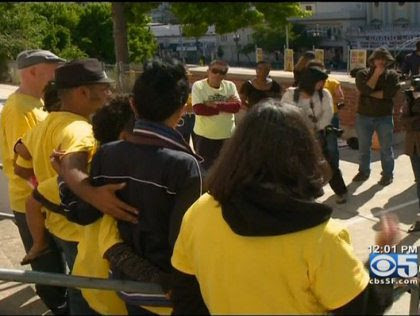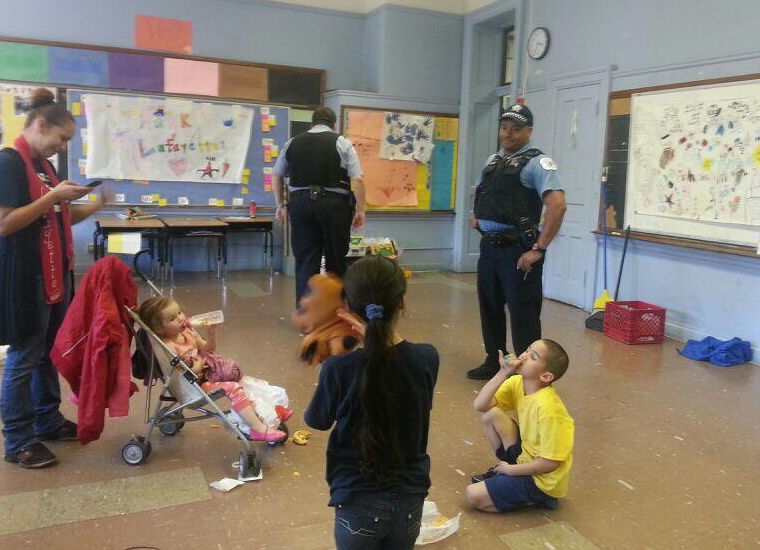Blog Post--Grace Lee Boggs
GRACE LEE BOGGS: One of the difficulties when you're coming out of oppression is that you get a concept of the messiah. You have to get to that point that we are the leaders we've been looking for. We are the children of Martin and Malcolm. I don't know what the next American revolution is going to be like, but we might be able to imagine it, if your imagination were rich enough.
Read the full transcript of interview excerpts here.
TDP Op-Ed in Baltimore Sun
Treat neighborhood schools like charters
In the wake of a contentious debate in Annapolis this spring that featured a bill that gives charter school operators more control over their schools (while principal autonomy was rolled back at struggling traditional schools), a show down over supplemental education funding, and a great deal of rhetorical debate around "autonomy," "choice," "accountability" and "successful" schools, we are wondering where the neighborhood schools are left.
Is the implication that teachers and principals in traditional schools are fundamentally different from principals and teachers in higher status schools? Would they fail to rise to the occasion if they were given the same deal that charters have?
See Op-Ed in Baltimore Sun here.
Ask any principal or teacher what they would do if only they had the freedom to follow their beliefs; it's a safe bet they have a plan. Ask any community member who has experienced the vicissitudes of neighborhood institutions over time whether they would support a school where they could help make decisions and share responsibility for the results, and the answer would be a firm "of course."
Why not offer traditional schools and their communities the same autonomy, freedom from onerous constraints, predictability in their funding and ability to make promises that they can keep to current and prospective teachers, children and families?
All of our school communities should have the chance to write the equivalent of a charter application that establishes a community-wide commitment to a belief-based approach to curriculum and pedagogy. What if the schools that muster this support were, as a result, afforded the same per pupil funding as charters and had the ability to select additional services (beyond a reasonable set of services that ensure equity, transparency and legality) to buy from central office? What if all schools could select whether to administer "benchmark" tests in addition to those mandated by the state? What if, based on these fresh chances and fresh sense of control, these schools could attract the most talented principals of their own choosing, who could in turn attract and keep excellent existing and new teachers? Will any superintendent or school board ever be brave and supportive enough to relinquish a portion of their power in service of democratic community control?
The rhetorical argument used by charter advocates is that only charter schools have the capacity to take on what they see as an extra load of accountability. We argue that charter schools in Baltimore are perhaps subject to somewhat less routine scrutiny (process-based accountability) than traditional schools and thus have an unfair edge. To the extent that they are subject to district rules, they serve as proverbial canaries-in-the-mine for the inefficiencies that all schools experience. Charters are among a subset of schools that have privileges not shared by all public schools; to name a few: the ability to select curriculum without restraint; a per pupil funding amount that gives them greater financial control; an ability to carry forward all left-over money at year's end, thus making long-term financial planning a possibility; and an ability to opt out of various district-mandated testing regimes. No one from the central office is making unannounced visits to charter school classrooms to ensure that teachers are on page 57 of lesson 31 on exactly April 22nd. Charter school spending is not frozen arbitrarily in April. They get to select the central office services they want to pay for. One can call these autonomies, or one can call them the reduction of process accountability.
Even the end-point or outcomes-based accountability that charters do deal with every three to five years in the form of a renewal application and a "school effectiveness review" is probably no more onerous and somewhat more predictable than the review process currently faced by many other schools. Non-charter schools face their reviews without the support of an independent operator to run interference between the school and district. Charters are subject to fewer of the unpredictable threats of closure faced by many other schools under No Child Left Behind.
Of course, politically speaking, this is a difficult stance to take. In an era when only few schools are immune from these threats of sanctions, charters — and other high-status public and private schools — are oases of relative predictability and security. Why would they want to give up their edge? People will say it cannot be done. People will say we do not have the talent pool. People will say that communities cannot be trusted.
Let us not make the mistake of thinking that what is good for the charter school goose is not also good for the traditional school gander.
Helen Atkinson is director of the Teachers' Democracy Project and is a former charter operator in Baltimore; democracyproject@icloud.com. Corey Gaber is a 6th grade teacher at a charter school in Baltimore; cbgaber@gmail.com. Ben Dalbey is a parent of two Baltimore city public schools children and an early childhood teacher; bendalbey@yahoo.com.
Protests attempt to bring attention to the racial disparity in school closings in Baltimore
The school board says that Langston Hughes Elementary School (at a total enrollment of 176) is too small, and that: "declines in enrollment make it difficult to support and maintain robust programming." (Baltimore City School Closure and Relocation Report) In fact, small size has been the only consistent reason given by school system administrators for closing Langston Hughes, a reasonably successful and well-respected school in a struggling, low-income black neighborhood in Northwest Baltimore. But a quick review of the 10 smallest schools in Baltimore (not including schools for students with disabilities) shows a disturbing pattern. Four of the 10 smallest schools—the ones that serve almost entirely (over 90%) African American students--are slated for closure. The four schools that serve a disproportionate percentage (over 40%) of White students (compared with the 15% of white students in the school system) are all staying open. The same pattern emerges if you broaden the study to include more small schools. The mass rally and lock-in that took place last Friday outside and inside the school was the the sixth action in an on-going battle to save the school. Neighborhood leaders and local supporters are bringing attention to the fact that this is a good school in a well-maintained building with great support from the community. They are questioning why the school board would close a good school. “Langston Hughes is a gem!” says George Mitchell from the Langston Hughes Community Action Association. He points out that the school students will be sent to, if the threat of closure is realized, is Pimlico Elementary/Middle—a school located a mile away, across a major street, and surrounded by a particularly run-down section of the community where abandoned homes, drug dealing, dirt bikes, tall weeds and trash are rampant. The five previous community protests have all involved adults and children taking the same walk to be taken by students as young as 4 and 5 years old each day. At recent school board meetings Mr. Mitchell and other community leaders have challenged the school board members to come “do the walk.” So far they have all declined. Parents, community members and supporters from other parts of the city who have taken the walk have all been outraged at the prospect of sending students through these streets to a school where there are already rumors of violent threats against the “new kids.” Pimlico is the worst performing school in the Park Heights community and has issues of over-crowding, poor building conditions, and high teacher turnover. The school is slated for renovation over the next several years which parents believe will make the overcrowding and health issues even worse.
So local leaders are asking the question: “Why, in a city where all eyes are on the underlying causes of our recent unrest, are we threatening to close a school such as Langston Hughes?” Why would we close any small, safe and relatively successful school, particularly if it is located in a low income, Black neighborhood and serves as a vital anchor-institution? If the only reason is that the schools are “too small,” and therefore “inefficient,” how is it that equally small schools serving whiter, more middle class populations get to stay open? One reason, they believe, is that these whiter, more middle class schools are charter schools and enjoy a relatively protected status and more flexible budget: Montessori Middle (88 enrolled; 42% White; 39% FARMS—Free and Reduced Meals); Independence School Local 1 (127 enrolled; 41% White; 68% FARMS); Green School (150 enrolled; 45% White; 27% FARMS), City Neighbors Charter School (216 enrolled; 43% White; 38% FARMS). We see small schools that are free from threat of closure and able to provide exactly the kind of programming that makes sense for the families whose children attend them. Three of these schools serve fewer students than Langston Hughes where attendance been lower in recent years due primarily to the threat of closure and competition from nearby charter schools. A comparison between a small Black school such as Langston Hughes and these other small schools immediately reveals two facts: Small schools are often safer, more caring, and more likely to produce good academic results for children who might otherwise not succeed in a larger setting (such as Pimlico Elementary/Middle)—a fact that appeals equally to low income and middle income parents. The second fact is that the charter schools receive more of their funding in cash out payments ($9450 for charters compared to approximately $6800 for Langston Hughes when compared line by budget line). Charter funding allows schools to voluntarily forgo services from central office in order to provide small class sizes and distinctive programming. The City Schools budget document for school year 2015-2016 includes this note on small schools: “At the school level, below a certain enrollment, it becomes difficult to provide an adequate standard of care, and things like after-school programming or maintaining a school library may be threatened. That’s why, for FY16, City Schools supplemented the budgets of 19 small schools with an additional $2.2 million.” If Langston Hughes were to convert to charter status it would receive approximately $400,000 more than it does now without any additional “subsidy” from the school system. Leaving aside whether charter schools actually cost the school system more than neighborhood schools, and leaving aside the even more important issue of lack of truly adequate funding for all our city schools, it is undeniable that some parents in mostly White neighborhoods have the option of sending their children to small schools that have the freedom to allocate funds as they see fit to meet their student needs. Black students from a low-income neighborhood in Northwest Baltimore are being denied this option.
Websites and Facebook Pages for more information:
Langston Hughes Community Action Committee https://www.facebook.com/langstonhughescommunityactionassociation?fref=ts
Teachers’ Democracy Project
Baltimore Algebra Project
www.Baltimorealgebraproject.org
Baltimore City Schools FY16 Budget
Baltimore City Schools Closure Report
Summary of “Portfolio Recommendations and Decisions”
http://www.baltimorecityschools.org/Page/27217
Occupying Schools
As efforts to keep Langston Hughes Elementary school open to its 180 pupils continue, we find inspiration in seeing how other communities took matters into their own hands to keep their schools from closing. The following articles are an example of how parents, teachers, and education advocates joined forces to push against efforts to displace students, staff, and teachers. Be Inspired!
|
Chicago Parents Occupy School | Teacher Solidarity
Parents in Chicago have occupied a school which is threatened with takeoverThe Piccolo Elementary School in Chicago is threatened with 'turnaround' and takeover by ...
|
|||||||
|
Preview by Yahoo
|
|||||||
|
Chicago Teachers Union | Piccolo Elem. Parents Occupy A...
The Chicago Teachers Union is an organization of educators dedicated to advancing and promoting quality public education, improving teaching and learning condit...
|
|||||||
|
Preview by Yahoo
|
|||||||
|
Preview by Yahoo
|
|||||||
|
Parents, Teachers 'Occupy' Oakland School To Protest Clo...
One man was proud to be there with his wife and three children - sleeping in tents on the school courtyard for the past few days.
|
|||||||
|
Preview by Yahoo
|
|||||||
|
Parents occupy Oakland school to protest closures » peoplesworld
OAKLAND, Calif. - Despite the Oakland Unified School District's order that they leave the premises, parents and teachers occupying Lakeview Elementary School since June 15 say they plan to stay until the district agrees to keep their school and four others open, reversing its deci...
|
||||||
|
Preview by Yahoo
|
||||||
|
Parents, Students Occupy Lafayette School (UPDATED) | Progress Illinois
Parents and students are occupying Lafayette Elementary school this afternoon in protest of the school's closing.
|
||||||
|
Preview by Yahoo
|
||||||
|
WATCH: Parents Occupy Closing School In Protest
The last bell was set to ring at Chicago's Lafayette Elementary School in Humboldt Park Wednesday afternoon, but Lafayette parents had other plans in mind. Around ...
|
|||||||
|
Preview by Yahoo
|
|||||||
|
Parents, Students Occupy Lafayette Elementary Classroom On School's Last Day (VIDEO) | Progress ...
Just after final classes let out at Jean D. Lafayette Elementary Wednesday, three parents and their children occupied a classroom for hours in opposition of the Chicago Public Schools' (CPS) plan to close the school for good this month.
|
||||||
|
Preview by Yahoo
|
||||||
|
Parents Occupy Classroom To Protest School Closings
Parents took over a classroom at Lafayette Elementary to protest the city's plan to shut down the school after this year.
|
|||||||
|
Preview by Yahoo
|
|||||||
The Best and Worst Places to Grow Up: How Your Area Compares (May 2015)
Location matters – enormously. If you’re poor and live in the Baltimore area, it’s better to be in Howard County than in Baltimore County orBaltimore City. Not only that, the younger you are when you move toHoward, the better you will do on average. Children who move at earlier ages are less likely to become single parents, more likely to go to college and more likely to earn more.
Read the full article here.







